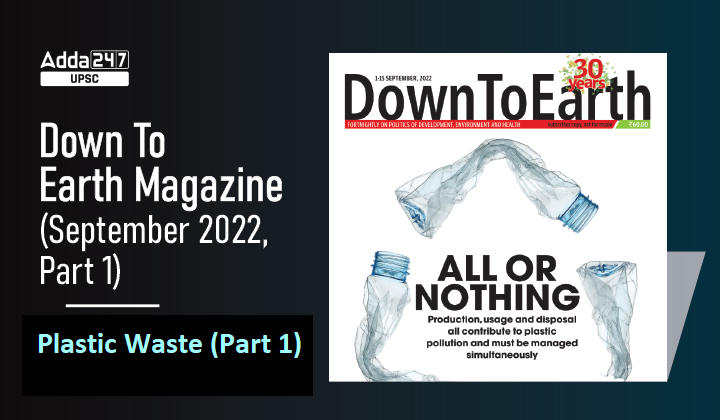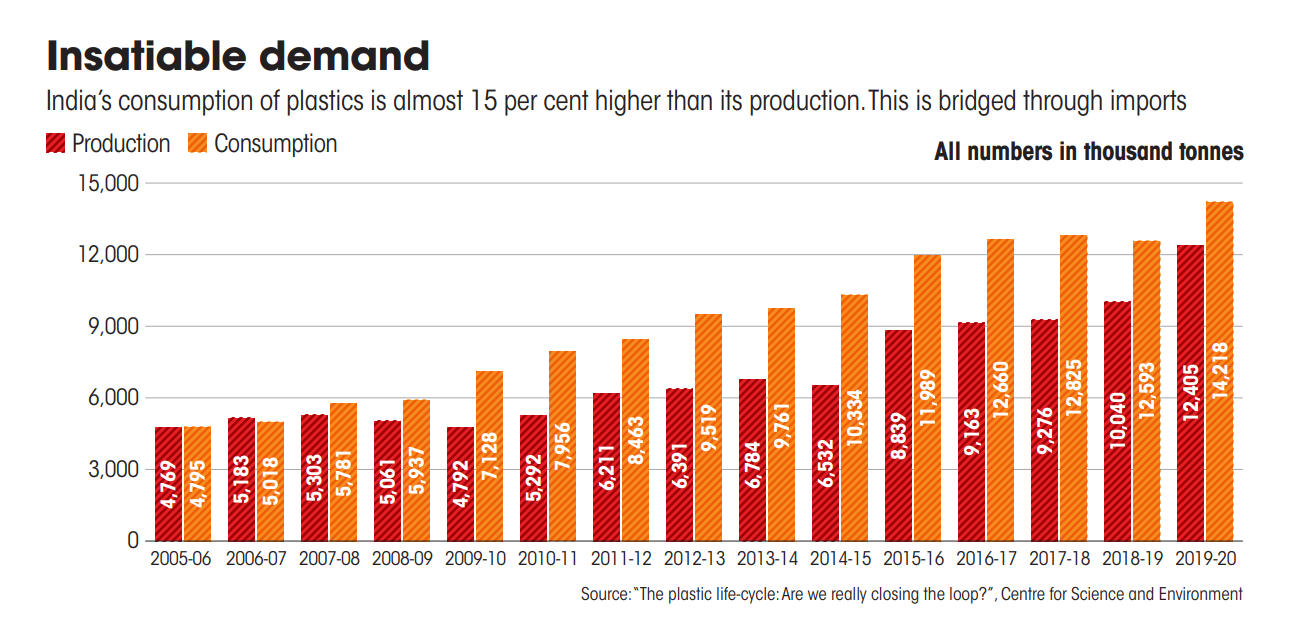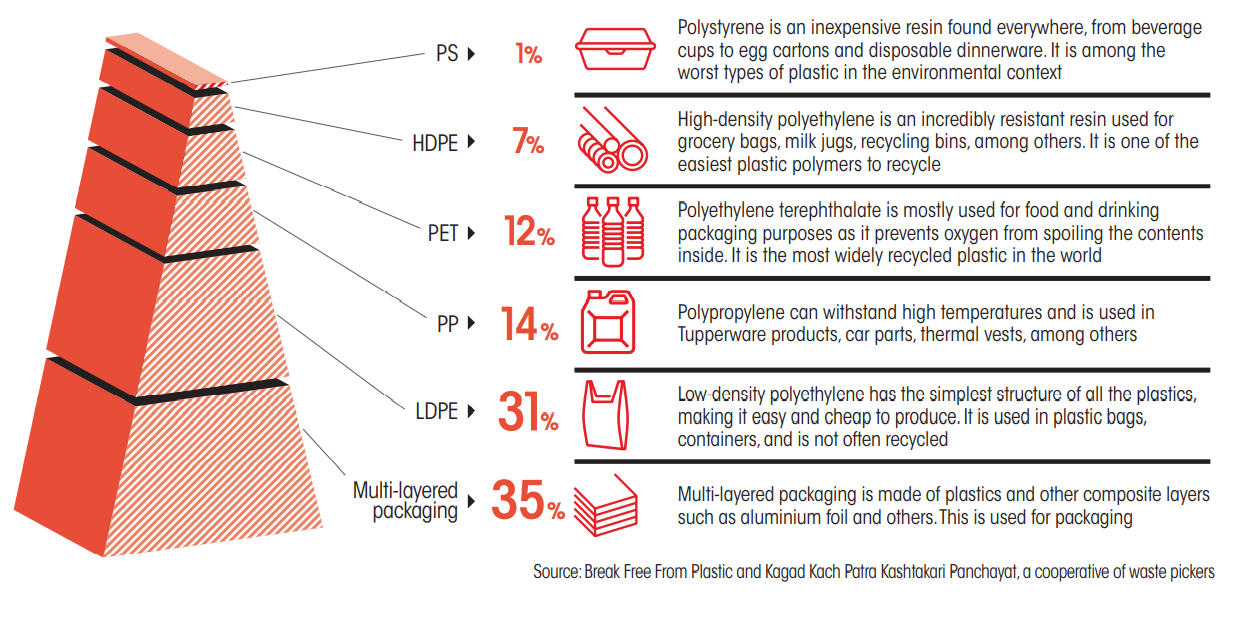Table of Contents
Down To Earth Magazine is a fortnightly magazine focusing on politics of environment and development, published in New Delhi, India.
UPSC Previous years’ questions on Development, Environment, Health and Disaster Management give us a clear idea about the increased importance of Down To Earth Magazine.
Down To Earth Magazine is one of the most important and indispensable sources for UPSC Civil Services Exam Preparation.
Keeping this in mind, here, we come with ”Gist Of Down To Earth Magazine” which covers important environmental current affairs articles in smooth pointed form, keeping in mind the demand of UPSC aspirants.
Plastic Waste: Introduction
- India imposed a ban on 21 single-use plastic items from July 1, 2022.
- The plan is to make India single-use-plastic-free by 2022.
- While the rollout is a positive step, the Centre’s decision not to include packaging plastics, an umbrella term for a host of plastic products used by fast-moving consumer goods (FMCG) companies, is likely to come in the way of the government’s plan to make India single-use-plastic-free by 2022.
- After all, packaging plastic, which includes everything from plastic bottles and sachets to multi-layered plastic (mlp) packets used for junk food, accounted for 59 per cent of the country’s plastic waste generated in 2018-19, according to the plastic industry body Plast India Foundation.
Plastic Waste: How Plastic Waste is impacting us?
- If the trend continues, greenhouse gas emissions from plastics alone would contribute around 15 per cent of the global carbon budget by 2050, warns a 2019 study published in Nature Climate Change.
- The lifetime cost to society, the environment and the economy of plastic produced in 2019 alone was US $3.7 trillion—more than India’s gross domestic product—estimates a 2021 report by international non-profit wwf.
- Unless action is taken, this cost is set to double for the plastic produced in 2040, it warns.
Plastic Waste: Increased use of plastic worldwide
- Despite increasing awareness about the health and environmental impacts of plastic waste, global production of the material has quadrupled over the past four decades.
- The latest analysis of the Delhi-based Centre for Science and Environment (CSE) shows that the production of plastics in India has increased by 2.6 times between 2005 and 2020, with a fourfold rise in imports during the period.
Plastic Waste: What is wrong with India’s Plastic Waste Management Rules?
- India released its current Plastic Waste Management Rules in 2016, and has amended it five times since—in March 2018, August 2021, September 2021, February 2022 and recently in July 2022.
- In almost each of the amendments, the rules have seen some level of dilution to benefit major producers, importers and brand owners.
Plastic Waste: India’s plastic waste driver
Multilayered plastics, which are non-recyclable at a commercial scale, make up 35% of all plastic waste
and 40% of all branded pieces of plastic waste.
Types of plastics and their share in total plastic waste in India:
Plastic Waste: Do we have environment-friendly solutions?
- All plastic waste can be turned into an energy source or put to alternate use in other industries, though neither of the solutions is good for the environment.
- Energy recovery involves the conversion of plastic waste into usable heat, electricity or fuel through a variety of chemical processes such as combustion and gasification. These processes are polluting and inefficient.
- Similarly, alternate use of plastic waste implies that it can be used for a purpose other than for which it was conceived. For example, plastic waste is often sent to cement factories where it is burnt as an alternative fuel.
- The ash from the burnt plastic becomes a part of the clinker, an intermediate material used in the cement production process. The process causes massive emissions that contribute 7-8 per cent of all carbon dioxide emissions worldwide, thus negatively affecting the environment.
Plastic Waste: Conclusion
Till the plastic problem is tackled head-on at every step in the life cycle of the material, there can be no hope for a sustainable solution.





 TSPSC Group 1 Question Paper 2024, Downl...
TSPSC Group 1 Question Paper 2024, Downl...
 TSPSC Group 1 Answer key 2024 Out, Downl...
TSPSC Group 1 Answer key 2024 Out, Downl...
 UPSC Prelims 2024 Question Paper, Downlo...
UPSC Prelims 2024 Question Paper, Downlo...
